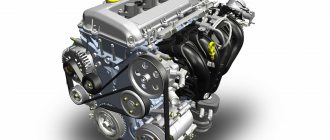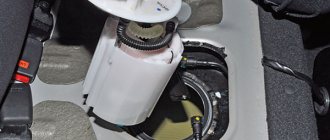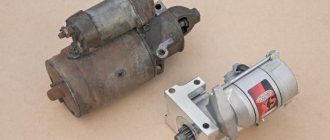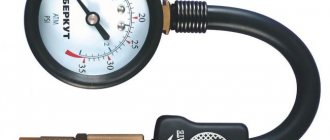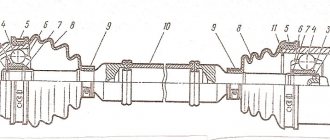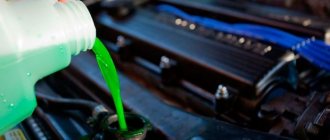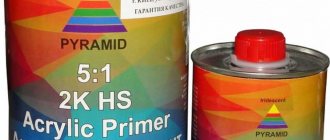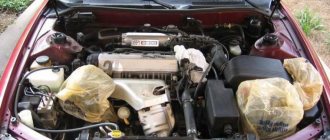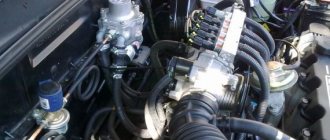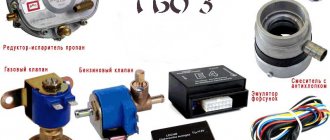In 2021, the number of gas-powered vehicles in Russia increased to 370,000. Savings make operating a gas-powered car more attractive. Benefits are the main reason for private car owners and companies switching to gas. After deciding to install gas equipment, you need to decide which gas to choose - propane or methane? This article will help you make a choice.
How is propane different from methane?
Propane is a colorless and odorless liquefied petroleum gas, a product of petroleum refining. It is used in a liquid state in metal cylinders under pressure. Working pressure is 4-8 atmospheres depending on the season: in summer the pressure is higher, in winter it is lower. Maximum operating pressure – 16 atmospheres.
Volume is measured in liters. Propane cylinders are filled to 80% to allow room for thermal expansion of the gas. For example, a 100-liter cylinder can be filled with about 80 liters of propane.
Methane is a natural gas that is colorless and odorless. It is lighter than air and cleaner in composition than propane, requiring virtually no filtration. In cylinders it is in a compressed gaseous state. The operating pressure is 200 atmospheres, which requires more complex, more reliable and expensive equipment for installation on a vehicle.
Volume is measured in cubic meters. To contain 1 cubic meter of methane, on average you need 4.2 liters of cylinder space in hydraulic equivalent. A 100-liter cylinder holds about 22-23 m3.
Methane
Methane is also called compressed natural gas CNG because it is of natural origin. This gas is odorless and colorless and is the simplest hydrocarbon. Due to the special chemical characteristics, storing this gas in a liquid state is impossible. This type of alternative fuel for internal combustion engines is used less frequently than LPG (propane) for a number of reasons that you will soon learn about. Simple cylinders for a methane installation are not suitable for the reason that methane is contained in special tanks under high pressure of about 220 atmospheres. The walls of such a cylinder are quite thick, from 0.6 cm and thicker. A seamless bladder design is used to increase durability. The weight of such a cylinder exceeds 60 kg, and the volume of gas stored in them varies from 11 to 15 cubic meters. In addition, only cylindrical cylinders are used for methane; toroidal ones are not suitable in any case. The fuel efficiency also differs; a methane engine burns 10-20% more than a gasoline engine. That is, translated into numbers, it turns out that 1 cubic meter of methane is equal to 1 liter of gasoline. This is why it is customary to use several rather bulky cylinders at once for methane gas equipment. The reduction in power is about 20%, this is explained by the fact that methane has less heat transfer, and when it enters the engine it occupies a large volume in the cylinders. The differences also relate to the compression ratio; for LPG the ratio is 11:1, while for LNG this figure is 13:1. It is necessary to understand that a significant increase in the compression ratio will make it impossible to use gasoline as fuel.
Safety of propane and methane
Among motor fuels, methane has the highest fire safety class 4. Propane-butane has class 2 (the less, the more dangerous), gasoline has class 3. Methane is lighter than air, so it evaporates quickly. The explosive concentration of propane in the air is 2-9% by volume.
According to UNECE Rules No. 67(01), propane cylinders must be equipped with a multi-valve safety valve with high-speed, fire and shut-off solenoid valves, which is responsible for stopping the gas supply when the engine is not running.
Toroidal propane cylinder under the bottom of Lada Largus
In accordance with UNECE Regulation No. 110, methane cylinders are equipped with a safety valve with pressure relief valves. Any gas contains an odorant to indicate its leak; if a gas smell appears in the cabin, you need to switch to gasoline and go to a gas service center for diagnostics.
Methane cylinder in the trunk of Lada Largus
Cost of installing gas equipment and fuel
Installing methane gas equipment on average costs 2 times more than propane equipment. For example, installing propane on a Lada Largus will cost an average of 35-45 thousand rubles, and installing gas gas methane will cost you 80-100 thousand rubles.
But at the same time, methane itself is cheaper than propane:
*Gasoline data for March 2021 provided by: Advanced Payment Solutions https://www.petrolplus.ru. Retail fuel prices are calculated using the NES methodology.
Experience shows that methane and propane pay for themselves in the same period of 1-2 years, depending on the mileage of the car. As an investment, methane is a better investment
, since after payback for the same mileage you get three times savings compared to gasoline, and two times compared to propane.
Support programs for our partners Gazprom GMT make it possible to facilitate the transition of transport to methane and make it practically cost-free. For more information about support programs, please contact your manager by phone.
Comparison of methane and propane
General benefits of gases in fuels
Both gases have common advantages over gasoline, which makes it possible to expand their use in propulsion systems from year to year.
- Lower price relative to gasoline;
- Environmental safety, less impact on human health;
- Increased driving time without refueling due to the larger volume of fuel that can be stored;
- The complex slows down the wear of car parts, especially when using an initially adapted engine.
General disadvantages of gases in fuel
There are also several reasons why gasoline still retains its leading position as a vehicle fuel.
- Less availability of gases for consumers (number of gas stations, as well as service centers for cars with gas installations);
- Decrease in vehicle power when using gas fuel;
- Increased wear of some particularly sensitive areas of the engine (for example, valves), taking into account the specifics of “dry combustion” of gas fuel.
Main differences between methane and propane
Methane and propane differ significantly from each other both in the specifics of storage and in the specifics of use as fuel; each has its own advantages and disadvantages.
- As for LPG, adding a propane unit to a car engine is significantly (up to 70%) cheaper than installing methane LPG;
- In terms of cost - in the long term, after the installation of gas equipment has paid for itself, methane provides high savings on fuel relative to propane;
- Reduced power - propane, relative to gasoline, gives a slight reduction in power up to 3-5% of the engine, and then at speeds above 140 kilometers per hour. Methane “weakens the machine” by up to 20%. But it is worth considering that this circumstance was almost leveled out in modern specialized installations;
- Environmentally friendly - propane has impurities and is not considered completely safe for humans and the environment. Methane is the cleanest fuel on the planet, superior in safety to electric motors and solar panels, and on par with alcohol plants;
- Weight of cylinders and volume of fuel - propane, compressed under low pressure along with its tank, weighs several times lighter than a cylinder of compressed methane. At the same time, propane can be stored for a journey three times longer than methane;
- Explosiveness - methane is half as explosive as propane, and taking into account dispersion, it is considered the safest compared to almost all other types of fuel. It is also worth noting that methane cylinders are damaged and deformed significantly less during an accident than propane cylinders. Thus, propane delivery becomes more dangerous in the long term;
- Availability of gas stations - methane gas stations are rare, you have to look for them specifically; gas stations with propane are almost as common as gasoline ones. At the same time, equipment for compressing, purifying and refilling methane is significantly less complex than propane equipment.
Table of advantages and disadvantages of propane and methane
Refilling with gas can be more convenient, economical and functional than using gasoline, and you can finally decide on the choice of a convenient gas using the following table.
| Factor | Propane | Methane |
| HBO cost | Low | High |
| Relatively cheaper than gasoline | 1.8-2 times | 3 times cheaper |
| Consumption relative to gasoline (per 10 liters) | 11-11.5 liters | 8-8.5 cubes |
| Average tank weight | 20-30 kg | 60-125 kg |
| Fuel reserve for average set (kilometers) | 600-1000 km | 250-350 km |
| Explosive concentration in air | 2,1% | 4,4% |
| Harmful effect on engine parts | high | low |
| Compression in a balloon | 10-15 atmospheres | 200-250 atmospheres |
| Environmental Safety | High | Full |
| Decrease in engine power relative to gasoline | 5% | 20-30% |
| Octane number | 100 | 110 |
| Availability of gas stations | Almost equal to gasoline | 1-2 per major city |
Fuel consumption and range
Propane is consumed 15-20% more than gasoline. That is, with a gasoline consumption of 10 liters/100 km, propane consumption will be equal to 11-12 liters per hundred.
Methane (in m3) is consumed 0-10% less than gasoline. Those. with a consumption of 10 liters of gasoline per 100 km, the equivalent amount of methane consumed will be 9 m3.
At the same time, Largus can travel about 800 km on a 100-liter propane cylinder (with a gasoline consumption of 8 l/100 km). On a 100-liter methane cylinder, which holds an average of 22-23 m3, Largus will travel about 300 km.
Methane cylinders are not toroidal, only cylindrical. Cylinders are usually placed behind the seat backs or covered with a false floor in the trunk.
Differences between methane gas and propane gas
The difference between LPG propane and methane is significant. The equipment required for each of these types of fuel is completely different. The differences concern all the parts that make up the LPG. Let's look at the differences in gearboxes:
- The propane reducer has thick walls. Its structure consists of two chambers, which allows the gas to evaporate first and then the pressure to decrease.
- The gearbox of methane equipment has a three-chamber structure. The material is used with increased strength, since the operating pressure is at a high level.
The differences also affect the cylinders. There are cylindrical and toroidal cylinders.
- Methane can only be filled into cylindrical cylinders. There are no seams in such structures, which increases their strength. Methane cylinders are thick and therefore heavier.
- Propane can be filled into cylinders of any shape. One of the differences between such cylinders is their volume. The maximum volume of toroidal structures is at around 94 liters, cylindrical ones are available up to 200 liters.
Gas consumption and payback
The differences in consumption between methane and propane are insignificant. At 100 km. propane goes up to 11 liters. If you install 5th generation equipment, the consumption is reduced to 9 liters. Methane per 100 km. it takes about 10 cubic meters. If a large cylinder is installed in the car, then the power reserve is impressive.
Payback directly depends on the frequency and intensity of use of the car, and travel distance. Methane is cheaper, but installing gas equipment is expensive. Propane is more expensive, but LPG is also more accessible. Many Internet services offer the use of online calculators. In the appropriate fields, enter parameters that relate to a specific situation. Based on this information, the program makes calculations, and the user sees the real payback period.
Safety of use
The issue of safety is far from the last criterion when determining which is better: gas equipment running on methane or propane. Every driver must think about the safety of himself, his passengers and the car owners around him. Fuel safety is determined by several criteria:
- Ignition temperature:
- for gasoline vapors 170-250 degrees;
- for propane 365-450 degrees;
- for methane 536-600 degrees.
- The pressure in the gas cylinder determines the explosion hazard index:
- methane is placed in durable cylinders that are rarely damaged during an accident, but they take up a lot of space and are heavy;
- propane is located in lighter cylinders, which can be easily damaged in an accident and require constant checking and monitoring.
- Environmental safety is a criterion that is constantly gaining relevance and becoming more significant every year for the world community:
- methane is absolutely safe for the environment;
- propane has a high level of environmental safety.
If the driver adheres to simple safety rules, then using gas fuel will not be dangerous for him:
- before each trip, the tightness of all connections is checked, violation of which will be indicated by an unpleasant odor;
- The cylinder and pipeline fastenings are constantly checked;
- inspection of gas equipment must be carried out regularly, without delays;
- the cylinder is not filled to the limit, 80% is the maximum.
If safety rules are followed, then the use of gas fuel will not become a source of dangerous situations. Compared to gasoline, both propane and methane are safer fuels, especially if 4th and 5th generation gas equipment is used.
Installation price
It is at this point that the main difference between methane and propane is hidden. The cost of installation is influenced by many different factors:
- HBO type (propane/methane);
- equipment generation;
- HBO manufacturer;
- car characteristics (class, age).
Among drivers and installers, gas equipment using methane and propane from the following manufacturers is popular:
- Lovato, Tomasetto, BRC from Italy;
- Polish STAG and Valtek;
- Guther is from France;
- Prins comes from the Netherlands;
- Lithuanian Tamona.
When choosing the generation to which the equipment belongs, there are some nuances:
- owners of carburetor cars can choose second-generation equipment, its price will vary within 300 euros;
- injection machines with a metal intake manifold can be equipped with only 2nd and 4th generation equipment;
- The plastic manifold on injection machines allows the installation of only 4 generations of gas equipment.
4th generation propane gas equipment may have different prices. It is determined by the number of cylinders and the manufacturer. For example, STAG offers to buy 4 cylinders for 300 euros, 8 cylinders will already cost 640 euros. The same 4 cylinders from BRC will cost 620 euros, and for 8 cylinders you will have to pay 1150 euros. Installation can take from 4 to 12 hours.
Methane equipment costs car owners more. For example, for a 3rd generation methane gas pump from Tartarini you will have to pay 586 euros. For similar 4th generation equipment they are asking 800 euros. Methane equipment cannot develop beyond the 4th generation.
Propane equipment is installed by a large number of service stations; there is healthy competition here and the driver can save money through promotional offers and additional services. Few companies work with methane equipment. Perhaps in a small city there will not be such specialists.
Action on the motor
Before installing LPG on a car, every car owner thinks about the effect of such fuel on the engine. Nobody wants to deal with expensive repairs while saving on fuel. The savings in this case will be doubtful. We can say one thing: both methane and propane have a gentle effect on the engine and all internal components of the car compared to gasoline. Here are a few main points that will play in favor of HBO:
- oil from the cylinders is not washed off when using gas, which extends their service life;
- lack of engine detonation due to the higher octane number of methane and propane than gasoline;
- the absence of soot during gas combustion extends the life of the spark plugs.
Both gases have the same effect on the engine; there is no difference between them.
Refueling and range
Problems arise with refueling. The number of gas stations that offer propane is not particularly different from gasoline stations. Even in small towns there are gas stations with propane. Methane can only be refueled outside a big city. In small towns such gas stations are not built at all. The essence of this problem lies in the need to use complex equipment for refueling with methane, which costs a lot.
Each car owner must make his own choice. We can only say one thing:
- propane and methane are definitely more profitable than gasoline, they have a more gentle effect on the car;
- propane is more expensive, but the equipment for it is cheaper;
- methane is cheaper, but the equipment is significantly more expensive than in the case of propane;
- both types of fuel are safe for the driver and the environment;
- Propane is available in any city; for methane you will have to go to the outskirts of the city.
So methane or propane?
Based on the calculations, it is obvious that methane is much more profitable, although it does not have such a developed gas station infrastructure.
Therefore, the first thing you should pay attention to is the availability of gas stations in your region. If your route often passes by a CNG filling station or a gas station is close, then methane is an excellent choice.
If refueling with methane is not an option, then consider installing propane. This is also a good choice, which gives savings of 2 times compared to gasoline.
© Elitgaz
Installation of LPG with propane on a car and its comparison with methane
LPG on propane
Methane or propane for cars, which is better? A more popular gas fuel is propane. Like gasoline, it is stored in a liquid aggregate state. Gas stations offer propane as a mixture of propane, butane and ethane. This mixture is almost 2 times cheaper than gasoline and cheaper than methane.
Propane cylinders in a car have the same gas capacity as gasoline fuel tanks. They are more spacious than methane cylinders, and are made not only in the usual cylindrical shape, but also in a toroidal shape, which allows you to hide the cylinder in the spare wheel compartment.
In the Russian Federation, the sphere of providing methane fuel to consumers is poorly developed. Owners of methane-fuelled gas stations in their vehicles will need to lengthen the route, since there are few gas stations offering methane.
Propane, as an oil by-product, is more popular in the supply of manufacturing plants. There are many more gas stations selling propane-butane mixture than those selling methane.
The main element that ensures the normal operation of gas equipment is the gas reducer . Its adjustment is required not only when purchasing a gas system, but also during operation. Gas reducers for a car with 2nd generation gas equipment on propane require mandatory adjustment on cars produced before the 2000s.
When installing gas equipment that runs on methane or propane, it is necessary to take a responsible approach to the choice of installation location and specialists.
HBO requires careful and frequent technical inspection.
In addition to daily checking the condition of the fasteners and components of the system, its tightness, every 15,000 km it is necessary to check at a service station.
